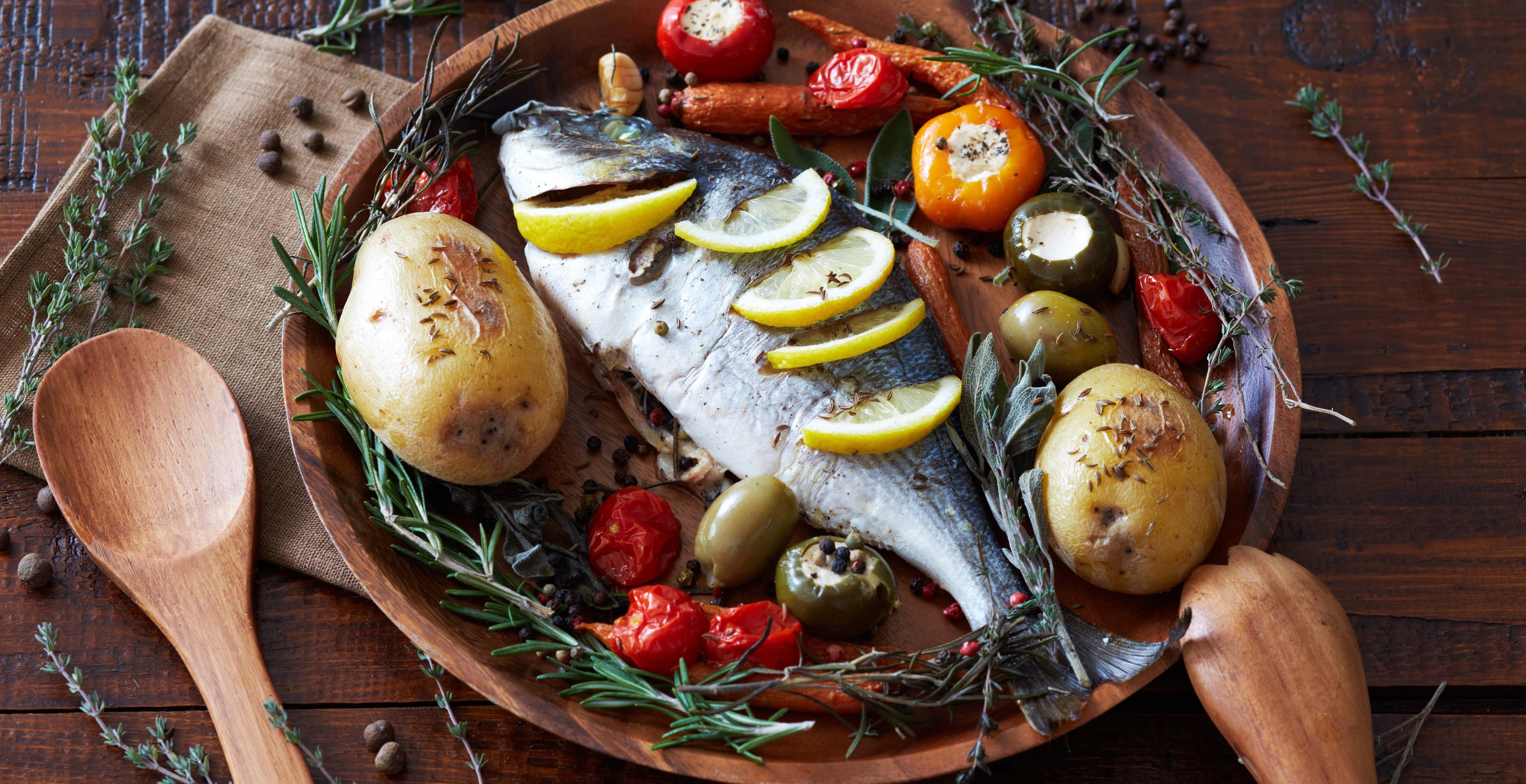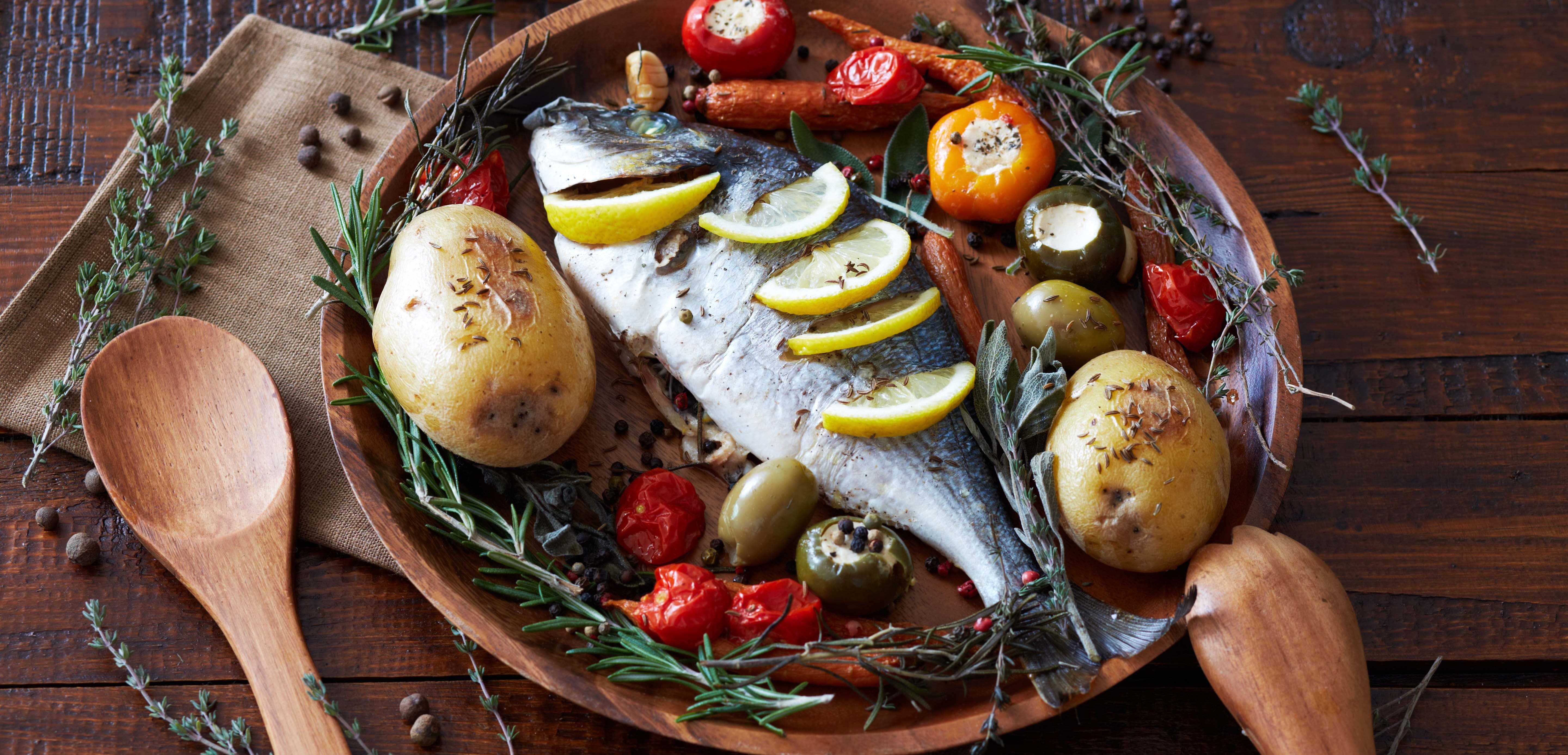Four Fish to Try Today


Looking to add some more fish to your menu? We’ve rounded up four common fish that are easy to incorporate into your diet, plus some simple tips for picking the best catch, how to store and prepare. Let’s dive in!
Trout
Trout is a pink-fleshed fish with a flavour reminiscent of salmon. Saltwater trout tends to have a gamier taste than freshwater trout, which is considerably milder in flavour. Both farmed and wild trout is readily available at grocery stores and often comes with a lower price tag than salmon. Trout pairs well with light citrus or dill-based marinades.
Snapper
The name snapper is an umbrella term for a large variety of Rockfish that are found in oceans all over the world. Red snapper, with its instantly-recognizable colour and vibrant scales, is a white-fleshed fish that is ideal for those who don’t like strongly-flavoured fish. Because of its incredible presentation red snapper is often baked whole as an individual serving. Cream or dairy-based sauces tend to overwhelm this delicate fish, but it pairs well with Asian and tropical flavours.
Salmon
Salmon has a distinct flavour that is stronger than most fish, making it a great choice when served with robust sauces. Full of healthy Omega 3 fatty acids, salmon is a more forgiving fish to cook for beginners as it contains higher amounts of fat than other fish. Look for wild sockeye salmon versus farmed Atlantic salmon, it’s a more environmentally-friendly option and it has superior flavour and texture.
Catfish
Catfish is often compared to tilapia, another popular white-fleshed fish with a similar taste. Catfish is mild and slightly sweet, with a meatier texture that makes it ideal for coating in batter to be oven-fried for homemade fish sticks, or as the base of an incredible sandwich. Most catfish sold in Canada is farmed and cleaner-tasting then wild catfish, which is often described as having a muddier taste.
General tips for buying fish
Find a good seafood source such as a fish counter in a grocery store or better yet, a specialty seafood shop. The fish counter shouldn’t smell fishy; a clean ocean scent is a sign that the fish is fresh. Fish should be resting on a bed of ice when being displayed, if the fish is covered in ice that’s even better. Make friends with a fishmonger if possible, they’ll be able to answer any questions you might have and are often a goldmine of preparation and recipe tips. Fish should feel firm to the touch without any feeling of sliminess which can indicate a high level of bacteria on the fish.
How to store fish at home
Ideally, fresh fish should be used the same day it’s purchased and can be kept in its original packaging. If the fish won’t be used for another day or two (at most) it needs to be stored at a lower temperature than the average refrigerator is kept. Solve this problem by rinsing the fish in ice cold water and patting it dry with paper towel and then transferring to a large resealable bag or sealed in plastic wrap. Using either a baking sheet pan or a large plastic container layer ice or ice packs with the wrapped up fish, finishing with more ice on top.
How to prepare fish
Fish is more delicate than red meat or poultry and is prone to over-cooking or falling apart as it cooks. When marinating fish keep in mind that it needs far less time than other meats, particularly when using a marinade that’s high in acidity. In general, fish only needs to marinate for half an hour although the fish will still be flavourful with less time. Baking, grilling, poaching, and pan-searing are all excellent ways to prepare fish for any home cook, being mindful to take off of direct heat just before you think it’s done. Perfectly cooked fish will flake apart at the touch of a fork or when a meat thermometer reads 145F.
